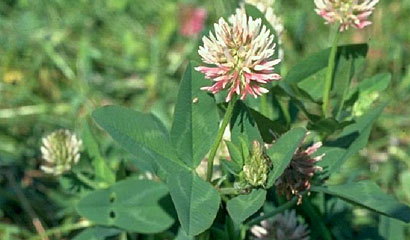| HOME > View Blog > |
View Blog
Wednesday, Sep 17, 2014 1:31pm

Blackhawk Arrowleaf Clover (Trifolium vesiculosum Savi)
 Blackhawk Arrowleaf Clover is a cool season, reseeding annual legume. It is a palatable and nutritious deer forage. Wild Turkey consume it as greens and it provides bugging habitat for poults.
Blackhawk Arrowleaf Clover is a cool season, reseeding annual legume. It is a palatable and nutritious deer forage. Wild Turkey consume it as greens and it provides bugging habitat for poults.
Blackhawk Arrowleaf Clover is very productive in the spring and early summer. It is widely adapted across the Southern US. It is most productive when grown on well-drained loam or sandy loam soils but can do well on well-drained clay soils. Best results are obtained when soil pH is between 6.0 and 6.5. It has good drought tolerance.
Plant September-October. Because Blackhawk Arrowleaf Clover is a legume, the seed should be inoculated with Rhizobium bacteria (strain O) before it is planted. Broadcast seed at a rate of 15 lbs. per acre. Cover seed no more than ¼ inch. In the absence of a soil test, fertilize with 100 lbs. per acre of 0-30-30 fertilizer at establishment.
Seedbed preparation is very important when planting small seeds. Disk and then smooth the seed bed by rolling with a cultipacker or dragging with a drag harrow. Do not disk seed in. Roll the seed with a cultipacker or lightly drag the seed in with a drag harrow.
Blackhawk Arrowleaf Clover is a prolific seed producer. It can be reestablished by shredding and lightly disking the food plot in September.
Clover is often planted in combination with cereal grains such as oats, wheat or rye. When planting in combination with cereal grains we recommend planting clover with Elbon Rye. When planting in combination with Elbon Rye decrease the clover seeding rate by ½. Do not mix the clover and cereal grain seeds together when broadcasting the seed. The smaller clover seed will settle to the bottom of the seeder and will not be evenly distributed. Seed the Elbon Rye first and then over seed the food plot with the clover seed. After seeding cover the Clover and Elbon Rye mixture to a depth of no more than ¼ inch by lightly dragging with a drag harrow. In the absence of a soil test, fertilize with 300 lbs. per acre of 13-13-13 fertilizer at establishment.
